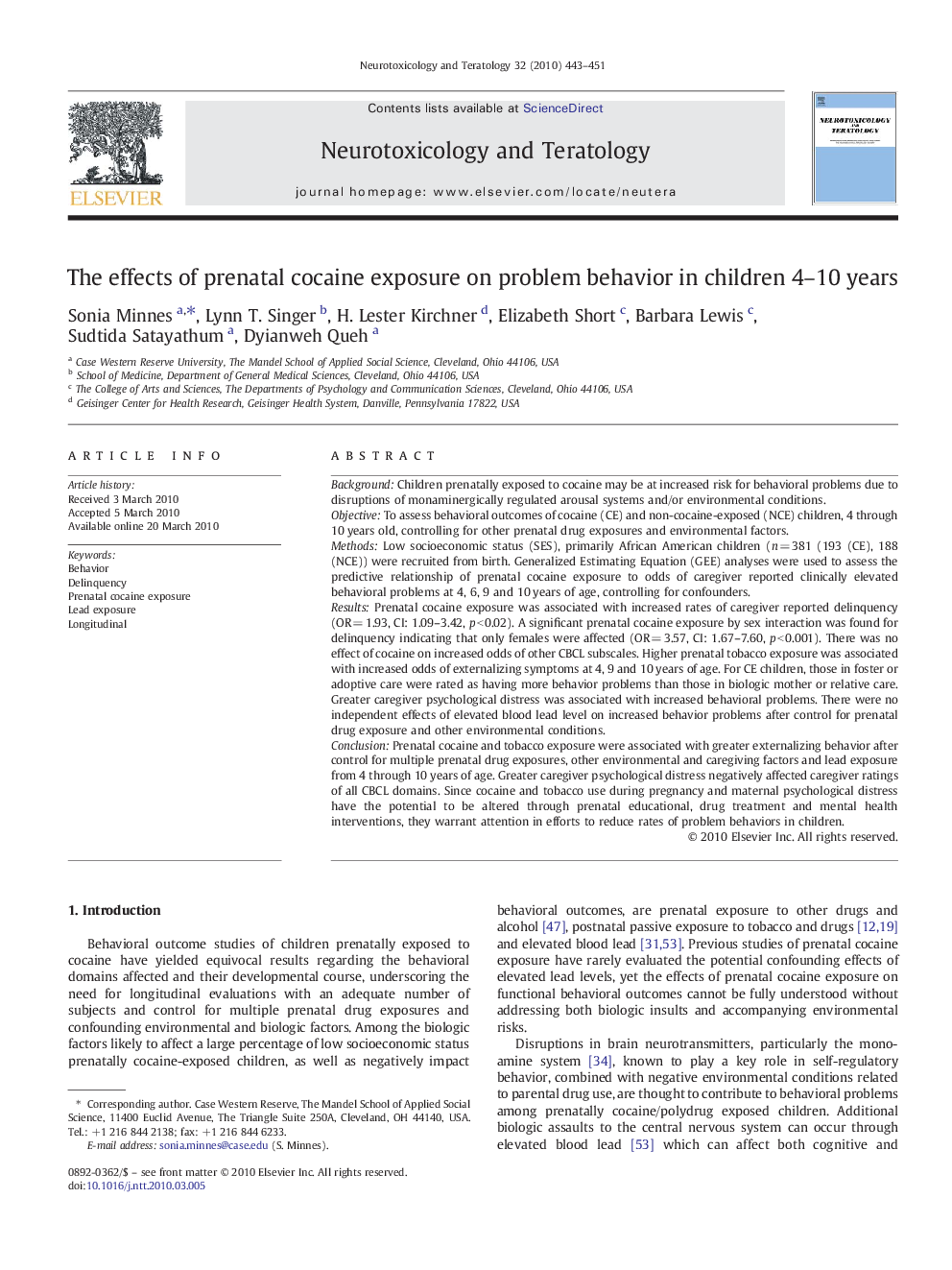| کد مقاله | کد نشریه | سال انتشار | مقاله انگلیسی | نسخه تمام متن |
|---|---|---|---|---|
| 2591454 | 1131812 | 2010 | 9 صفحه PDF | دانلود رایگان |

BackgroundChildren prenatally exposed to cocaine may be at increased risk for behavioral problems due to disruptions of monaminergically regulated arousal systems and/or environmental conditions.ObjectiveTo assess behavioral outcomes of cocaine (CE) and non-cocaine-exposed (NCE) children, 4 through 10 years old, controlling for other prenatal drug exposures and environmental factors.MethodsLow socioeconomic status (SES), primarily African American children (n = 381 (193 (CE), 188 (NCE)) were recruited from birth. Generalized Estimating Equation (GEE) analyses were used to assess the predictive relationship of prenatal cocaine exposure to odds of caregiver reported clinically elevated behavioral problems at 4, 6, 9 and 10 years of age, controlling for confounders.ResultsPrenatal cocaine exposure was associated with increased rates of caregiver reported delinquency (OR = 1.93, CI: 1.09–3.42, p < 0.02). A significant prenatal cocaine exposure by sex interaction was found for delinquency indicating that only females were affected (OR = 3.57, CI: 1.67–7.60, p < 0.001). There was no effect of cocaine on increased odds of other CBCL subscales. Higher prenatal tobacco exposure was associated with increased odds of externalizing symptoms at 4, 9 and 10 years of age. For CE children, those in foster or adoptive care were rated as having more behavior problems than those in biologic mother or relative care. Greater caregiver psychological distress was associated with increased behavioral problems. There were no independent effects of elevated blood lead level on increased behavior problems after control for prenatal drug exposure and other environmental conditions.ConclusionPrenatal cocaine and tobacco exposure were associated with greater externalizing behavior after control for multiple prenatal drug exposures, other environmental and caregiving factors and lead exposure from 4 through 10 years of age. Greater caregiver psychological distress negatively affected caregiver ratings of all CBCL domains. Since cocaine and tobacco use during pregnancy and maternal psychological distress have the potential to be altered through prenatal educational, drug treatment and mental health interventions, they warrant attention in efforts to reduce rates of problem behaviors in children.
Journal: Neurotoxicology and Teratology - Volume 32, Issue 4, July–August 2010, Pages 443–451